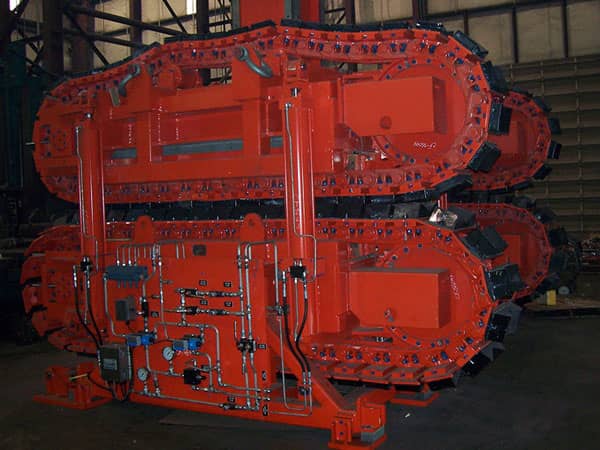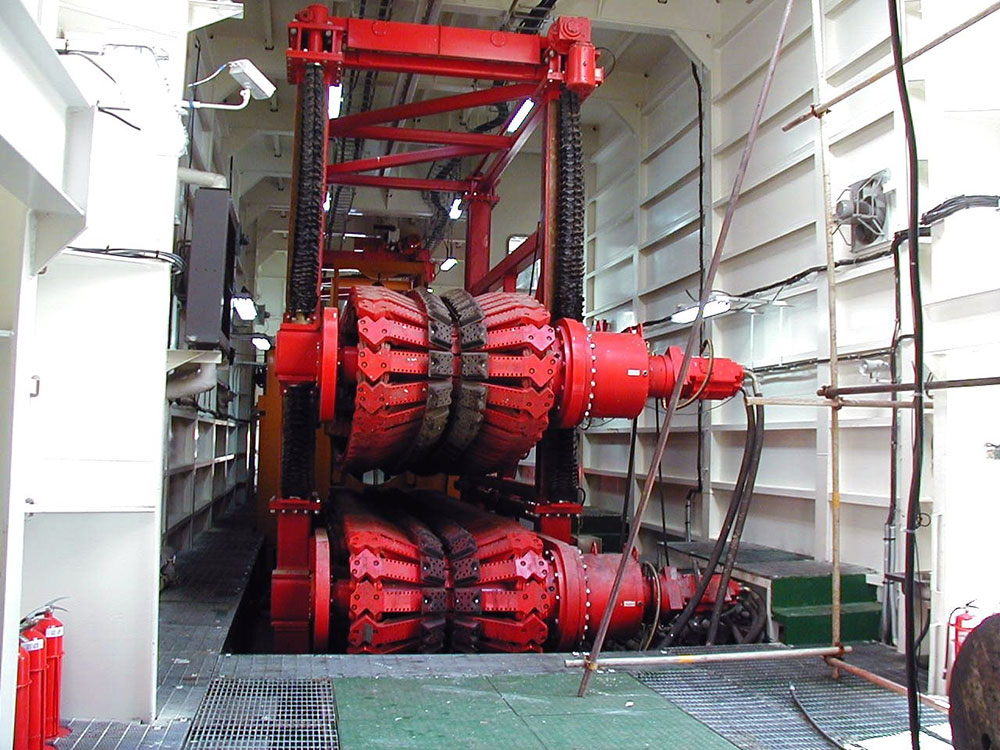
LINEAR PIPE TENSIONERS
CFI- WesTech Linear Pipe Tensioners are engineered to each customer’s exact specification and requirements. CFI-WesTech equipment is in use on pipe-lay vessels of various descriptions all over the world, operating in all kinds of ambient conditions. CFI- WesTech offers a variety of Linear Pipe Tensioners (LPT’s) designs and sizes to fit nearly any customer requirement.
CFI-WesTech LPT’s are capable of maintaining accurate tension on the smallest diameter pipe or electric cables all the way up to machines capable of handling pipe joints as large as 60 inches outside diameter. If required, these tensioners can be adapted to handle pipe up to 72 inches outside diameter. Multiple Pipe Tensioners can be operated in tandem to increase the maximum tension capacity and/or to provide flexibility and redundancy to pipe-lay operations.
CFI-WesTech equipment is typically controlled and monitored through the use of PLC based Digital Electronic Control Systems (DECS) and can be electrically or hydraulically driven. In some applications, simple hydraulic controls can be provided for use with on smaller equipment.
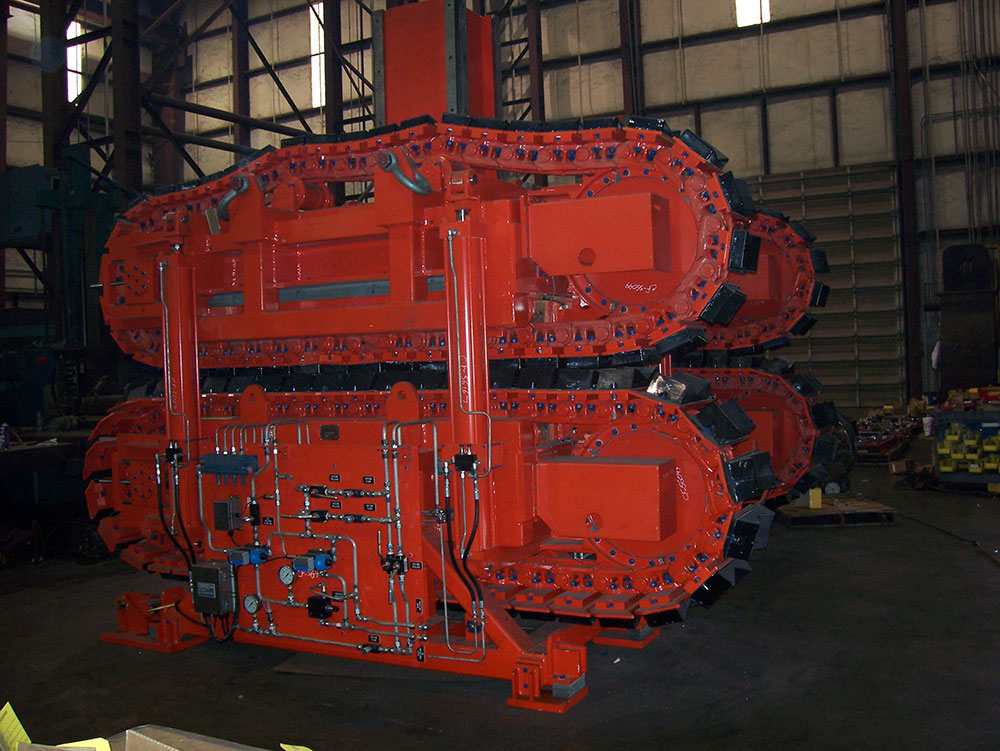
LINEAR PIPE PUSHERS
CFI- WesTech offers a specialized version of our “E” Series Pipe Tensioner, has the capability to pull or push pipe with equal force. The “Linear Pipe Pusher” (LPP) is used in land based pipe spooling yards for pipeline applications, where the pipe joints are pre-fabricated on shore, then transferred onto holding racks, and then spooled onto pipe-lay vessels utilizing the “reeled pipe” method of pipe-lay.
The LPP can also be easily adapted to provide hold-back tension during spooling operations as well.
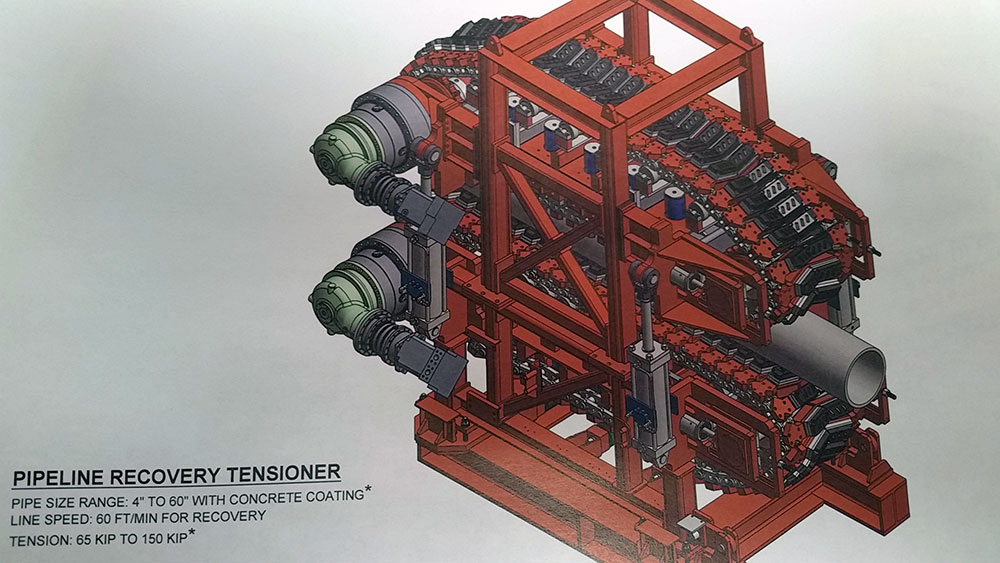
LINEAR PIPELINE RECOVERY MACHINES
CFI- WesTech has recently developed its new Linear Pipeline Recovery Machine (LPR). This patented design technology is specifically applicable to pipeline decommissioning applications as mandated by regulations in many countries to recover and dispose of abandoned pipelines and flow lines.
The LPR machine operates much like a Linear Pipe Tensioner, with its primary function to aid in the recovery of previously laid pipelines which are no longer in use. The (LPR) machine is designed for use on a pipe-lay, or other similar vessels to reverse lay (recover) pipelines currently on the seabed. The design facilitates gripping forces not achievable on any known existing equipment of comparable size. Either concrete covered or bare pipe can be gripped and held firmly by the (LPR) machine as the pipe is in-hauled during the recovery of the submerged pipeline. Various gripping pad designs, best suited to the particular surface/coating, can be utilized as applicable.
For added versatility and economic utilization, the (LPR) machine can also be used and operated as a normal Linear Pipe Tensioner, when equipped with standard traction pads. Plus, a portable version is available to provide additional flexibility and utilization.
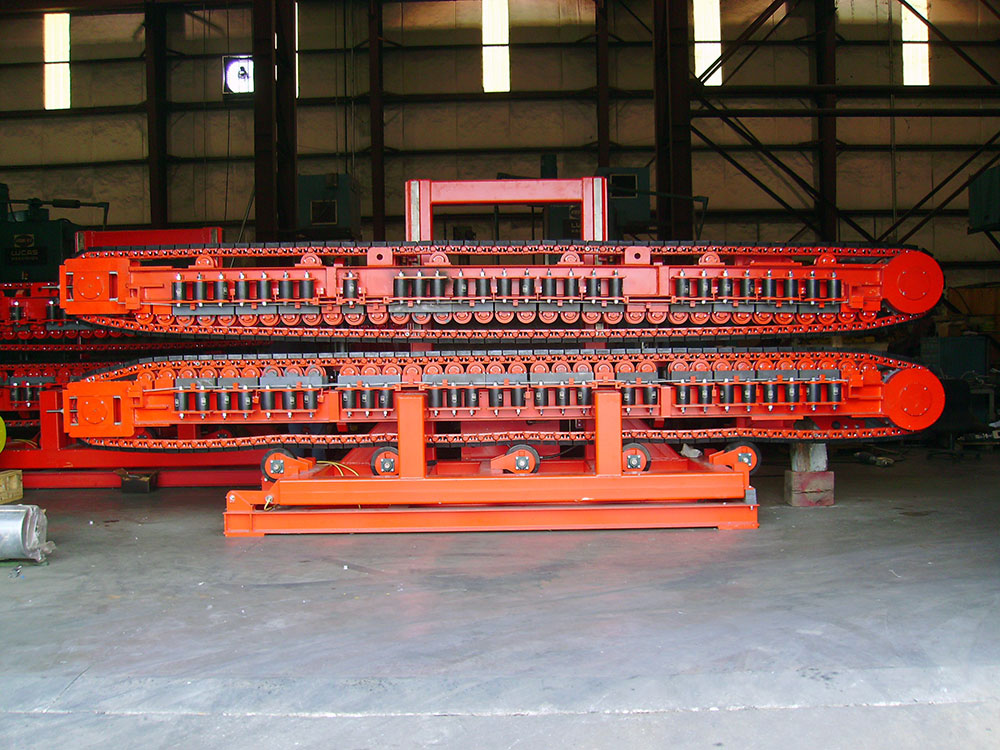
LINEAR CABLE LAYING TENSIONER
The Linear Cable Laying Tensioner is designed for use on various vessels as a portable or permanent installation. The surface pressure is very low to prevent damage to the cable or tube being laid. The (CLT) machine represents the ability of CFI-WesTech to produce equipment to the specific requirements dictated by the customer’s needs. Our equipment is always a fully engineered solution.
CUSTOM DESIGNED LINEAR PIPE TENSIONERS
For more information on any CFI-WesTech Linear Pipeline Machines and equipment, contact Control Flow, Inc.’s WesTech Operation with the following information:
- maximum pipe tension required
- maximum pipe speed possible during vessel movement
- maximum pipe weight per joint
- average pipe joint length
- type of pipe coatings expected
- pipe joint maximum outside diameter, including the coating
- choice of electric VFD driven tracks or hydraulic motor driven tracks (Note: Engine driven power units or electrically driven power units can both be supplied. Starboard side, Port side)
- ramp orientation on the pipe lay vessel (Note: Center lay pipe ramp orientation dictates certain design considerations of the linear pipe tensioner and are critical for determining equipment)
- other equipment details will be determined by the exact application and typically are vessel specific
- if any equipment including LPT’s are available to be moved from one vessel to another
- any requirement for portability in the required pipe tensioner system

